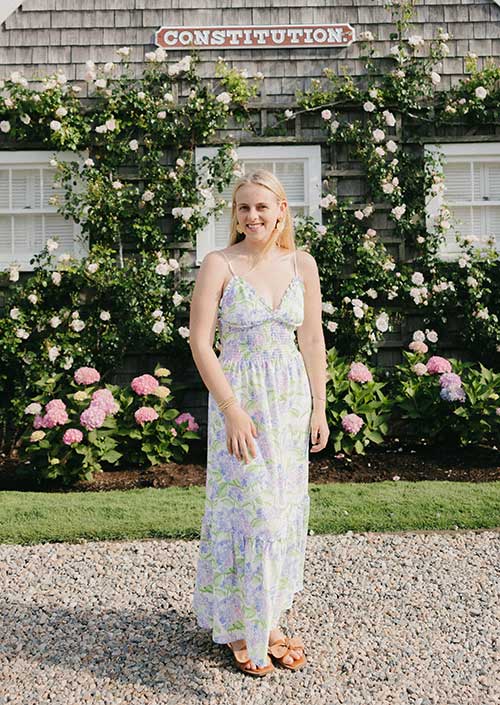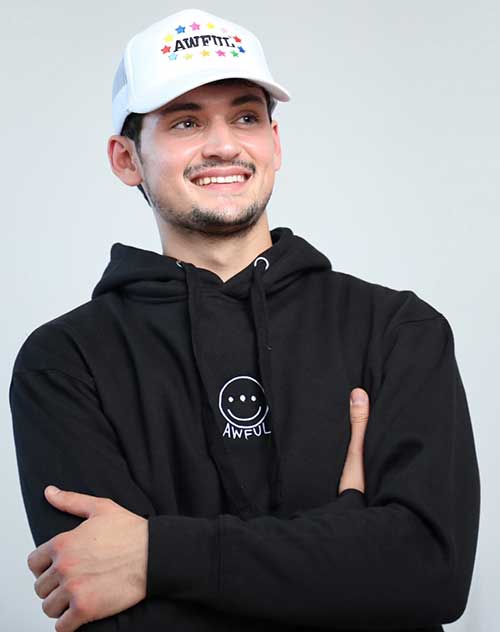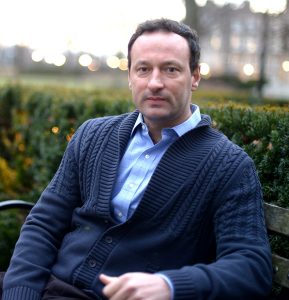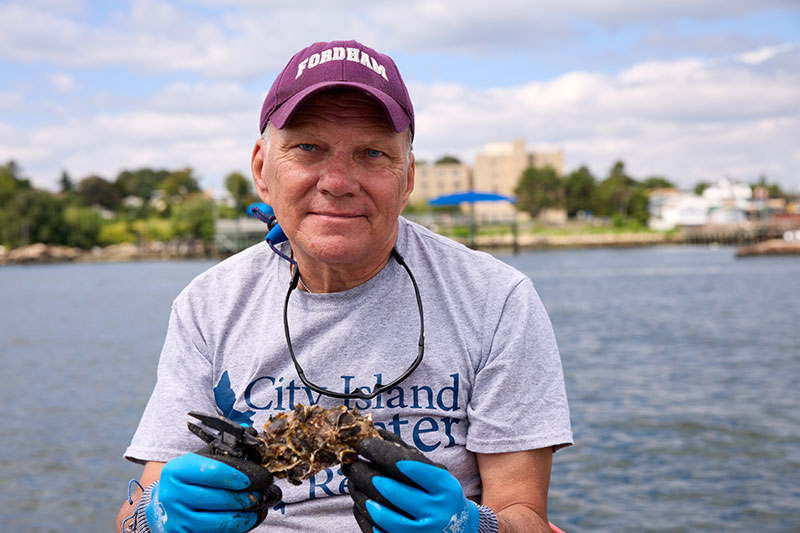The panel is an independent advisory body that synthesizes scientific information on climate change. Members advise city policymakers on local resilience and adaptation strategies that protect against extreme heat, heavy rain, coastal storm surges, and other climate hazards.
“Much of New York City comprises islands. We must be prepared for the fact that we’re at risk of future hurricane landfall, we’re going to lose land to sea-level rise, and there will also be drought and temperature increases,” said Conte.
“I’m very excited to contribute knowledge that can be put to good use for a panel like this.”
Conte is the first Fordham professor to join the panel, which was first formed in 2009 and renews its membership every three years, tapping experts from government, non-profits, and academia. This appointment is not the first time the government has called on Conte for his expertise; his research on climate change was cited in a major report issued by the White House.
Learning from Past Climate Disasters
Each new panel is tasked with issuing a report at the end of its three-year term. Conte said that past panels have analyzed global climate models that had been recently released, downscaling them to show how they might affect New York City.
No new models have been released recently, so he said he expects this panel will dig deeper into the challenges that are already known–particularly those highlighted by recent disasters. The group will hold a series of public meetings this year to gauge the public’s interest in specific areas.
Conte said the panel will provide important guidance during a critical time.
“Given the outcome of the recent election, we expect that federal leadership in this area is going to be greatly diminished,” he said.
“New York City is a high profile area, so this kind of assessment is important to maintain the focus on the challenges we face and show what can happen at the local level to reduce the impacts of climate change.”
Recent examples of extreme weather worth re-examining are numerous. Conte said the panel may determine what will happen to water supplies if droughts like the one that lasted nearly a month continue. Or it might try to quantify the risks that New Yorkers will be exposed to as a result of extreme bad air days caused by Canadian wildfires or those posed by brush fires that have been on the rise in the New York City area.
“We’re also thinking about when the next Superstorm Sandy is going to come through and how we’ll have to deal with it,” he said.
Conte, who has published research on outdoor air pollution in New York City, the challenges of managing tropical cyclone risk, and the impact of climate change on natural capital, hopes the panel will explore each of these topics.
The Everyday Costs of Climate Change
He’s also hopeful that as an economist, he’ll be able to help the panel illustrate the societal costs of climate change and pollution that are poorly understood by the general public.
“One of the big challenges is that, as we just saw in this election, everyone cares about the price of milk, but we don’t have a price for clean air or a price for not having to miss work because of asthma or because it’s too hot,” he said.
“I’m hoping to provide literature that shows what types of policy interventions are successful when facing these challenges and what the difficulties are for policymakers in putting them into action.”
]]>Campus dining has changed.
The renovated Marketplace opened in the McShane Campus Center at Rose Hill on September 3, unveiling brand-new menus, food stations, and a variety of seating options to create a dramatically improved dining experience. The renovation was supported in part by a $5 million grant from New York state.
Here’s a taste of what students are experiencing.
Vegan and Vegetarian Options
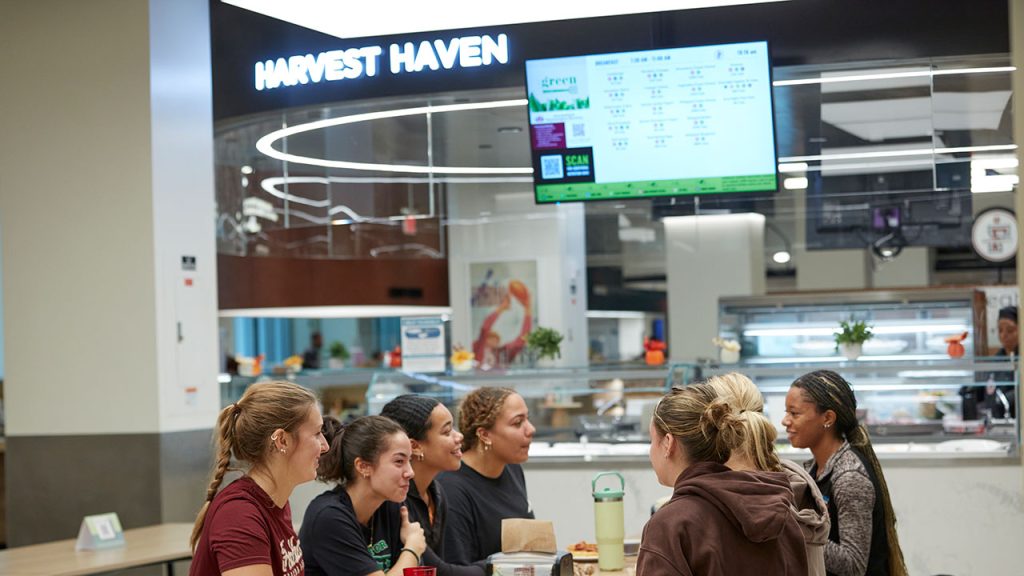
The first thing visitors encounter is the vegetarian and vegan station, which sets the tone for the new Marketplace. By using fresh ingredients that have a low impact on the environment, the station is designed to help Fordham lower its carbon footprint.
“Students are really gravitating towards more plant-based options,” said Deming Yaun, Fordham’s dining contract liaison. “It’s a statement of freshness that the station is making that is carried through the whole facility.”
Space for Everyone
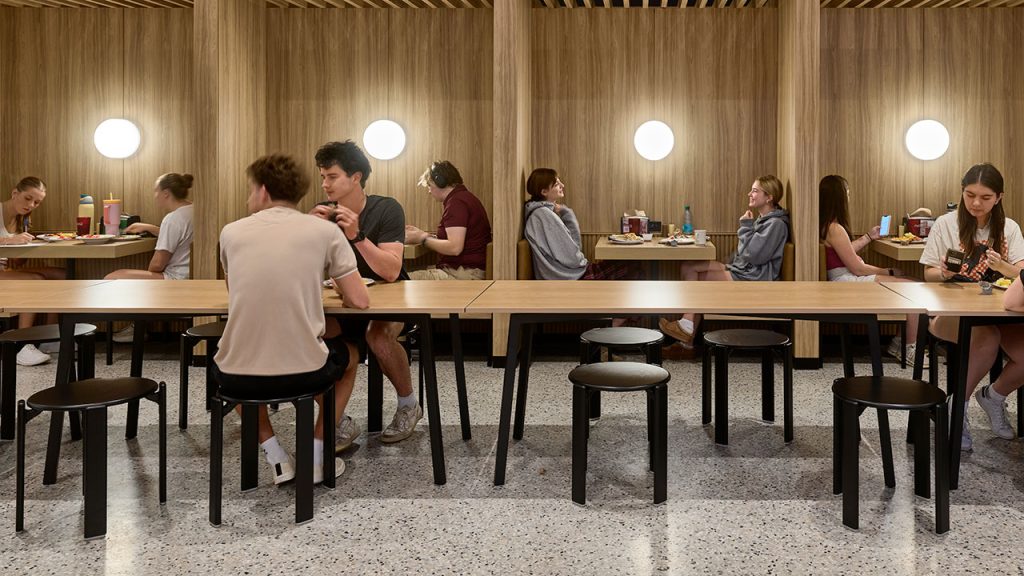
Seating arrangements are diverse: booths, tall tables, long tables, and benches are situated throughout, welcoming everyone from single diners looking to work through lunch to teams and other big groups gathering for a communal meal. One dining room can be sectioned off for private gatherings. Altogether, the space can accommodate nearly 800 diners.
Chef’s Table

The chef’s table adds a bit of culinary theater to the dining hall, offering a front-row seat to cooking demonstrations and a chance to order from a seasonal menu featuring special tastings.
Restaurant Row

Diners can choose from the Iron Skillet, featuring made-to-order meals all day; Trattoria Italian Kitchen, with hot-from-the-oven pizza; Ignite grill; and Sweet Nothings, with house-made desserts.
Halal Station

New York City is known for its halal carts, and now Rams can get an authentic version of this street food without leaving campus. “It’s nice that it’s going to be an everyday option,” said Andres Perez, a Fordham senior and a pitcher on the baseball team whose go-to halal meal is chicken and rice with a salad. The Marketplace also offers kosher meals upon request.
Sustainable Eating
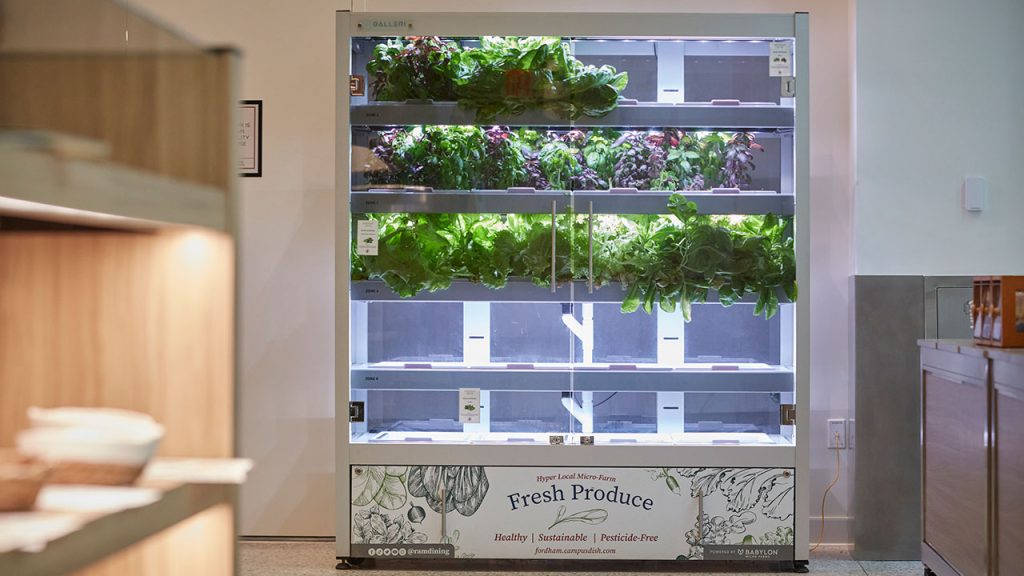
Several meals in the Marketplace are certified climate-friendly by the World Resources Institute. They’re marked with a badge so students can easily identify items that have a low environmental impact.
]]>For prospective students, sustainability is a significant concern. Of the nearly 8,000 high school students surveyed by The Princeton Review in 2024, 61% said their college decision would be swayed by information about the school’s commitment to the environment. “We are seeing substantive interest among college applicants in attending green colleges,” said Rob Franek, the publication’s editor-in-chief.
What Makes a ‘Green College?’
The list cited a few sustainability highlights at Fordham, including its sustainability committee and dedicated sustainability officer as well as its process for tracking and reporting on greenhouse gas emissions. Fordham has made substantial investments in reducing its emissions. As of December 2023, the university had nearly 3,000 solar panels generating renewable energy.
Fordham’s investments in updating its dining options also has an eye on sustainability. The dining halls offer plant-based options, and feature water-saving, food-waste reducing hydroponic gardens where workers snip fresh herbs for use in meals.
Fordham students can gain valuable experience in sustainable practices through internships, including one internship geared toward lowering Fordham’s carbon footprint, as well as through their coursework. Students can earn degrees in sustainable fields like environmental science, or pursue other academic paths with an environmental focus. For example, the Gabelli School of Business offers a sustainable business minor, and Fordham students can work directly with the community on environmental issues through the Center for Community Engaged Learning.
One such opportunity came last year when the city’s Department of Transportation awarded the center a $25,000 grant to gather community input on how best to fix the Cross Bronx Expressway. Emissions from the busy roadway have long been blamed for poor health outcomes in the Bronx. Julie Gafney, the center’s director, said she envisions multiple opportunities for students to get involved with the project, from city planning to architecture to visual arts.
Fordham also received a $50 million grant from the EPA in 2023 to partner with community groups serving people disproportionately impacted by pollution, climate change, and other environmental stressors.
The Green Colleges List
The Princeton Review chose the colleges on its Green Colleges List based on surveys of administrators about sustainability-related policies, practices, and programs, and student surveys about “green” campus experiences.
As a group, the colleges on the list derived 28% of their energy from clean or renewable sources and diverted 46% of their waste from incinerators or landfills.
]]>Urban areas are currently home to 55% of the world’s population, according to the United Nations, and that’s predicted to increase to 68% by 2050.
Cities and Climate Change, a course being offered as part of Fordham’s M.A. in Urban Studies program, aims to provide students with the tools and knowledge to implement those solutions.
“It’s about how climate change is going to impact urban life, but also how cities can transform the crisis into something that’s really valuable in terms of sustaining existence,” said Rosemary Wakeman, Ph.D., who will teach the course again next spring.
Wakeman, a professor of history and the former director of Fordham’s Urban Studies program, created the course last year, knowing that students whose future work lies in government, urban planning, and architecture will need to take into account rising sea levels, utilities strained by extreme heat, and poor air quality during their careers.
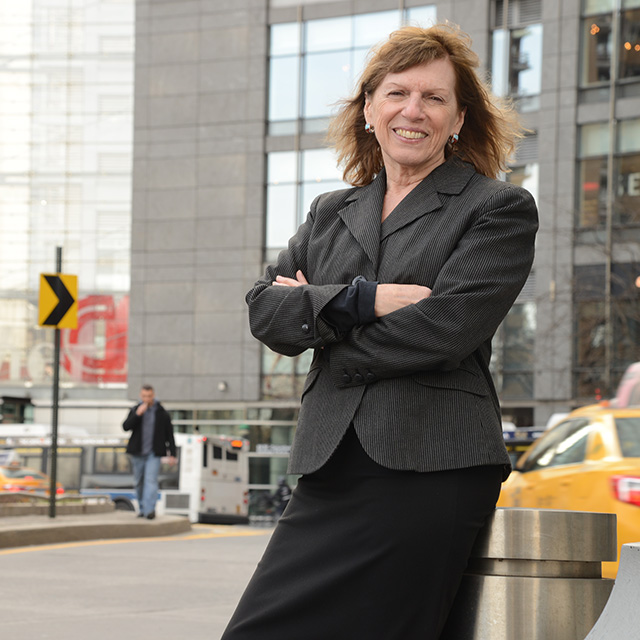
“It’s very practical in trying to set out a framework to help people make decisions.”
New Yorkers learned during Super Storm Sandy how vulnerable cities along coastlines are, Wakeman said. In the class, Wakeman explores how these cities are coping with the problem, including Indonesia’s plan to move its rapidly sinking capital from Jakarta to the island of Borneo by 2045.
“If you look at cities and urban regions internationally, you find a whole range of solutions that are being tried. Some of them, like Jakarta, are very radical, and then you get possibilities that are much more a step-by-step approach,” she said.
Cities’ vulnerability to storms and flooding has inspired their municipal governments to succeed where national governments have failed.
“Most researchers have argued that looking at national governments for answers to climate change has been an unmitigated failure,” Wakeman said.
“Despite the U.N. efforts and the various conferences that have been held, the carbon footprint is getting larger, and very little is being done in terms of coping with sea level rise. You have to look at cities in urban regions to find out how successful various strategies have been.”
Nisa Hafeez, GSAS ’23, an urban studies master’s graduate who took the class last spring, is now working on transportation issues as a mobility analyst for sustainable design, engineering, and consulting firm Arcadis IBI Group.
She said the class resonated deeply with her, having experienced the effects of climate change personally. When she was a child growing up in Karachi, Pakistan, winter temperatures dropped into the 40s, but now they rarely drop below the 60s, and in the summers, there are noticeably longer stretches when the mercury tops 100 degrees. Pakistan is no anomaly either, as the past nine years have been the warmest years on the planet since modern recordkeeping began in 1880.
In some ways, the course gave Hafeez hope because she learned about how many governments are actively working to address the problem.
“It’s an important topic for young people because we are the ones who can actually have a voice in really promoting change,” she said.
]]>“It’s really gratifying to see how many of the projects lean into our identity as a Jesuit institution,” said Ann Gaylin, dean of GSAS, “and strive to advance knowledge in the service of the greater good.”
Students displayed posters on topics that ranged from biology to theology to economics to psychology.
Nina Naghshineh, Ph.D. in Biological Sciences
Topic: The Role of Bacteria in Protecting Salamanders
How would you describe your research?
I study the salamander skin microbiome and how features of bacterial communities provide protection against a fungal pathogen that is decimating amphibian populations globally.
Why does this interest you?
I’m really interested in how microbes interact and function. My study system is this adorable amphibian, but the whole topic is so interesting because microbial communities are so complex and really hard to study. So the field provides many avenues for exploration. These types of associations are present in our guts and on our skin. I’m interested in going into human microbiome work after I graduate, so I have a lot of options available to me because of this research.

Nicholas McIntosh, Ph.D. in Philosophy
Topic: Using AI to Help Scholars Distill Information from a Vast Body of Texts
How would you describe your project?
It’s a digital humanities project that uses natural language processing to help read and understand many texts at once. There’s this vision we have of a really great humanities scholar who is able to know a text so well that they could almost quote it from memory. That is really difficult for us to do right now in the same way we might have when there were only a couple of touchstone classical texts.
What do you hope this will accomplish?
Scholars are scanning texts either for our classes or for our own research. So this would help us figure out, number one, how can you look at a text and be able to recognize— is this text useful for me? Number two, what are the most important concepts that we should be tracking in a text? And number three, what is the text as data telling us that maybe scholarship is overlooking or overemphasizing given traditional readings?
I would also like to show that those of us who do philosophy don’t have to be afraid of these technologies.
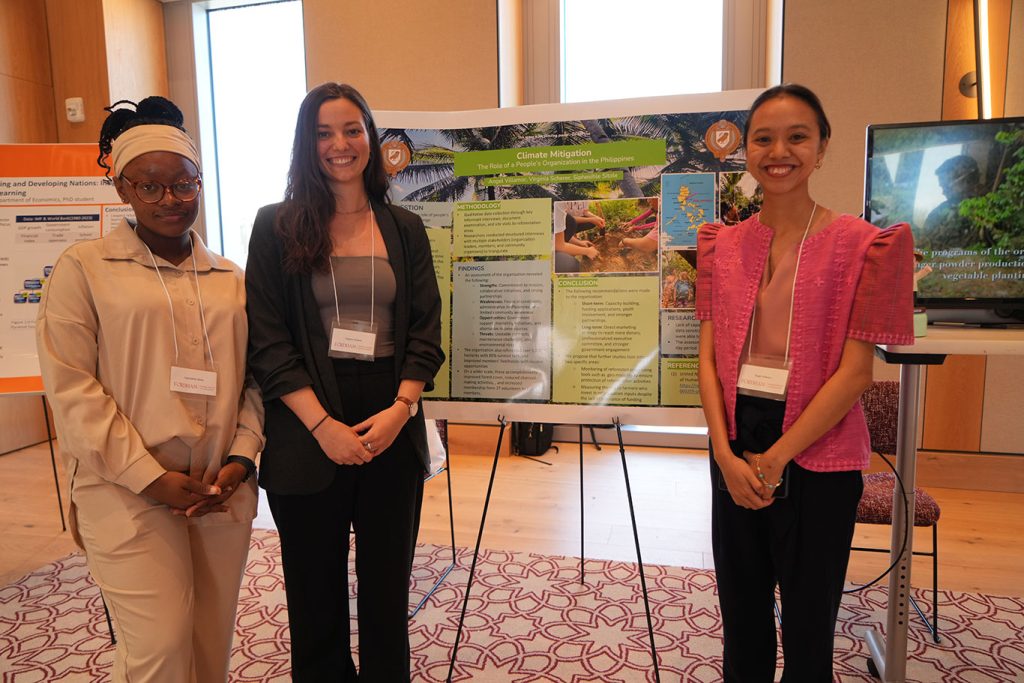
Angel Villamar, Siphesihle Sitole, and Virginia Scherer, M.A. in International Political and Economic Development (IPED)
Project name: Climate Mitigation: The Role of a People’s Organization in the Philippines
What were you investigating with this research?
We looked at the role of the grassroots organization Tulungan sa Kabuhayan ng Calawis in dealing with climate mitigation. It was formed after Typhoon Ketsana hit in 2009. There is an area right outside of Manila that, over the years, has been deforested, so this organization organized to help incentivize reforestation. The farmers in the area, who are mostly women, develop the seedlings, do the land preparation, and plant the trees.
What do you hope people learn from this project?
We want to think about reforestation not as a one-time thing but as a long-term sustainable way. What incentives do you need so that you can keep doing this? We are showing that you can involve ordinary individuals at the grassroots level in something that is much bigger than them.
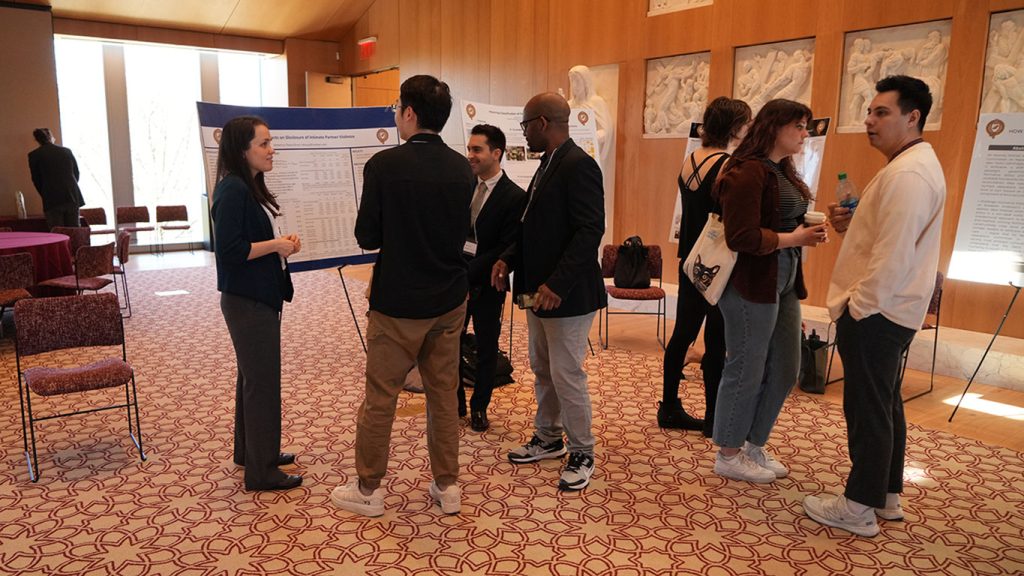
Answering a call from Pope Francis, Fordham is indeed a place committed to taking “concrete actions in the care of our common home.”
Here are some updates from the first quarter of 2024, from student sustainability interns to “cool” foods to fun community events that make an impact.
Facilities
In January, 11 more undergraduate students joined Fordham’s Office of Facilities Management as sustainability interns to help the University in its efforts to reduce its carbon emissions. They’re working on projects connected to AI-enabled energy systems, non-tree-based substitutes for paper, and composting. The office is still looking for three more students to join; email Vincent Burke at [email protected] for more information.
Dining
Stroll into a dining facility at the Rose Hill or Lincoln Center campus, and you’ll find “Cool Food” dishes such as crispy chicken summer salad, California taco salad, and spicy shrimp and penne.
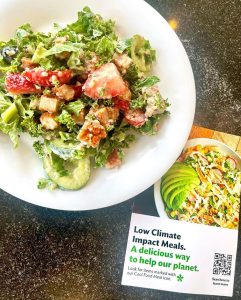
The dishes, which are marked by a distinctive green icon at the serving station, have a higher percentage of vegetables, legumes, and grains, which generally have a lower carbon footprint than those with beef, lamb, and dairy. According to the World Resources Institute—which Fordham partnered with on the Cool Food project—more than one-quarter of the world’s greenhouse emissions come from food production.
In March, the University went one step further by signing onto the New York City Mayor’s Office Plant-Powered Carbon Challenge. The pledge commits Fordham and Aramark to reduce our food-supply carbon emissions by a minimum of 25% by the year 2030.
Academics
This semester, a new one-credit, university-wide experiential learning seminar titled Common Home: Introduction to Sustainability and Environmental Justice was taught by faculty and staff from the Gabelli School, the Center for Community Engaged Learning, the Department of Facilities, the Department of Biology, and the Department of Theology.
Other sustainability-focused courses this semester include the City and Climate Change, the Physics of Climate Change, and You Are What You Eat: the Anthropology of Food (Arts and Sciences); Sustainable Reporting and Sustainable Fashion (Gabelli School of Business); and Energy Law and Climate Change Law and Policy (Law).
Did You Know?
Like most buildings in New York City, the ones on the Rose Hill campus get almost all of their power from power plants fueled by natural gas (along with some solar power). To power a building like Walsh Library, a natural gas-powered plant normally uses 37 million gallons of water annually. But fuel cells like the ones that were installed at the Walsh Library in 2019 actually make their own water, and as as result, Fordham is saving the community the equivalent of 57 Olympic-sized pools each year.
Students Take the Lead
At Fordham Law School, the student-run Environmental Law Review hosted a March 14 symposium that considered the impact of artificial intelligence on environmental law. Panels focused on how regulators and litigators can use AI and the challenge of addressing AI-generated climate misinformation.
In January, Fordham Law student Rachel Arone wrote The EPA Rejected Stricter Regulations for Factory Farm Water Pollution: What This Means, Where Things Stand, and What You Can Do for the Environmental Law Review. And the Law School’s student-faculty-staff collective Climate Law Equity Sustainability Initiative held a series of lunchtime discussions about climate change, law, and policy.
Student groups LC Environmental Club and Fashion for Philanthropy teamed up on March 8 to create reusable tote bags on International Women’s Day. The bags were donated to Womankind, which works with survivors of domestic/sexual violence and trafficking.
The United Student Government Sustainability Committee continues to run the Fordham Flea, a student-run thrift shop that connects students interested in selling old clothes with those looking to buy sustainably. The next flea will take place on April 26 from 11 a.m. to 2 p.m. outside of the McShane Center.
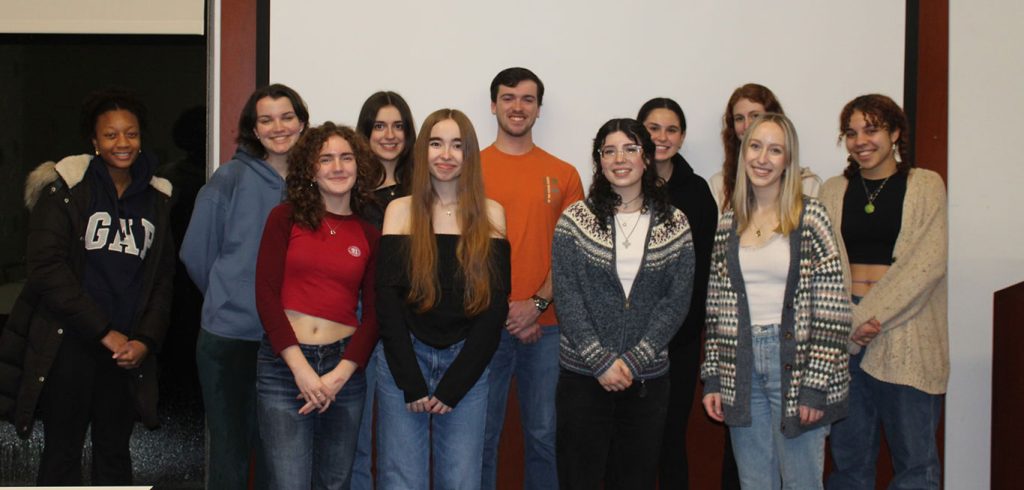
Community Engagement
The Center for Community Engaged Learning (CCEL) held an Urban Agriculture and Food Security Roundtable on Feb. 2. The gathering brought together community organizations and leaders from the Bronx to discuss urban agriculture and food security. Attended by Bronx Congressman Ritchie Torres, the meeting was also an opportunity for groups to learn about resources available from the USDA and the New York City Mayor’s Office on Urban Agriculture.
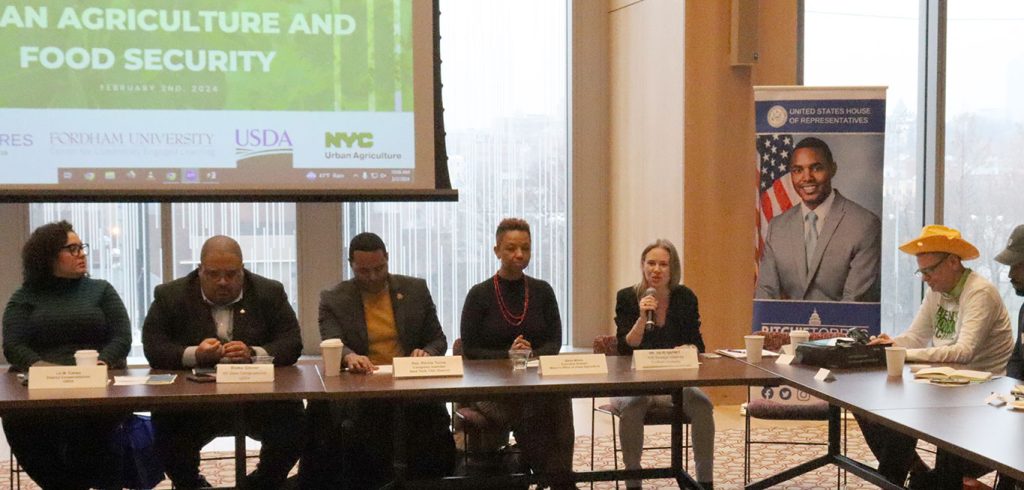
CCEL Director of Campus and Community Engagement Surey Miranda-Alarcon served as a panelist at a March 9 climate justice workshop at SOMOS 2024 in Albany, along with Mirtha Colon, GSS ’98, and Murad Awawdeh, PCS ’19.
Faculty News
David Gibson, director of the Center on Religion and Culture, and Julie Gafney, Ph.D., director of the Center for Community Engaged Learning, attended “Laudato Si’: Protecting Our Common Home, Building Our Common Church” conference at the University of San Diego on Feb. 22 and 23.
Marc Conte, Ph.D., professor of economics, and Steve Holler, Ph.D., associate professor of physics, presented their research around air quality, STEM education, and education outcomes on March 11 at the first night of Bronx Appreciation Week, which the Fordham Diversity Action Coalition organized.
Alumni

On March 14, Tara Clerkin, GSAS ’13, director of climate research and innovation at the International Rescue Committee, delivered a lecture at the Rose Hill campus titled “The Epicenter of Crisis: Climate and Conflict Driving Humanitarian Need and Displacement.”
In Case You Missed It
Here are some sustainability-related stories that you may have missed: In January, economics professor Marc Conte published the findings of a study that examined whether people living in areas with more air pollution suffer more from the coronavirus. The Gabelli School of Business partnered with Net Impact, a nonprofit organization for students and professionals interested in using business skills in support of social and environmental causes. A group of the Gabelli School Ignite Scholars traveled to the Carolina Textile District in Morgantown, North Carolina, to learn the benefits of sustainable and ethical manufacturing.

Upcoming Events
April 12 and 19
Poe Park Clean-up
In celebration of Earth Day on April 22, the Center for Community Engaged Learning is organizing visits to the park, where volunteers can help pull weeds and spread mulch. 10 a.m. – 2 p.m., 2640 Grand Concourse, the Bronx. Sign up here.
April 13
Bird Watching in Central Park
Law professor Howard Erichson will lead students on a birdwatching tour of Central Park, where they hope to spot and identify a few of the hundreds of species that pass through Fordham’s backyard on their annual migration routes. Meet at the Law School lobby at 9:30 a.m. Contact [email protected] to reserve a spot.
April 13
Ignatian Day of Service
Students and alumni will meet at the Lincoln Center campus and walk over to nearby Harborview Terrace, where they will build a community garden with residents. Lunch and a conversation about Ignatian leadership will follow. 10 a.m. – 2 p.m.
Click here to RSVP.
April 15
ASHRAE NY Climate Crisis Meeting
The theme of this meeting of the American Society of Heating, Refrigerating, and Air-Conditioning Engineers is “Challenge Accepted: Tackling the Climate Crisis.” All are welcome.
7 a.m.- 1 p.m., Lincoln Center Campus. Contact Nelida LaBate at [email protected] for more information or register here using code FordhamStudent2024.
We’d Love to Hear From You!
Do you have a sustainability-related event, development, or news item you’d like to share? Contact Patrick Verel at [email protected].
]]>Funded through a nearly $25,000 grant awarded to Dougnon by the Wenner-Gren Foundation in September 2023, the Water and Migration Project is a comprehensive ethnographic research program that analyzes the effects of post-drought migration patterns on housing, community, and livelihoods across three villages in Mali.
“Many scholars work on water and migration, but mostly as a future scenario, Dougnon said. “I’m looking at a group of people who really, collectively, left their region and settled in new places … this is concrete data.”
The Sahel region of western Africa, where Mali is located, suffered two notable periods of drought in 1973 and 1984. This devastated the local agrarian economy and displaced its inhabitants, leading to mass migration.
The project aims to collect data from those impacted communities through first-hand interviews, field observations, and archival records from entities such as local churches and nongovernmental organizations (NGOs).
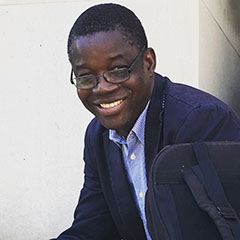
Working for the Marginalized
When Dougnon reached out to organizations for data on these migratory communities, those institutions weren’t just willing to pitch in—they were eager.
Little information is available on the long-term effects of these droughts on mass migration, and researchers like Dougnon are working to fill a crucial gap that will hopefully lead to actionable relief efforts. Mali has continued to deal with droughts, affecting about 400,000 residents each year and reducing crop revenues by $9.5 million annually.
“I’m so proud that not only are the migrants interested in my research, but also the institutions,” Dougnon said. “The state and NGOs are interested in these results because …these [migrants] are facing challenges.”
For Dougnon, this human aspect is the key that has driven his work throughout his long career.
“All of my research has this humanitarian aspect—defending the marginalized,” Dougnon said.
Dougnon, who is currently on leave from Fordham to work on the project, has been conducting this research for the first six months of the grant. He will spend the remainder of the year compiling a report on his findings that he will present to the foundation, as well as to a workshop of Fordham community members studying comparable issues.
How Do Communities Adapt?
At Fordham, Dougnan teaches a variety of undergraduate and master’s level courses that combine his expertise in French with subjects like African society and the environment. An anthropologist by trade, Dougnon has been surveying the humanitarian effects of climate change, such as how natural resources get depleted and how that impacts internal migration, for more than 25 years.
Dougnon stressed that these small-scale examples of the effects of climate change—and how agricultural communities respond to them in real time—could provide key insights into managing potentially larger resource scarcity.
“My project wants to look at how they have been able to adapt to new places in the south of Mali,” he said. “How do they transform this landscape by bringing in technologies, social organizations, and so on?”
Dougnon hopes to use his findings to create a new, more robust project that can replicate these methods on a larger scale—ideally encompassing multiple countries in Africa.
]]>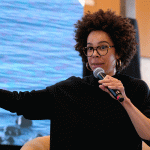
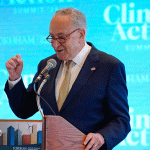
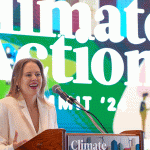
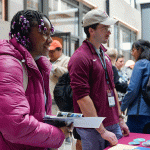
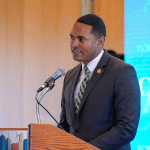
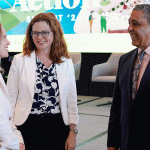
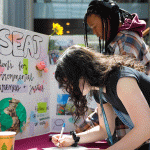
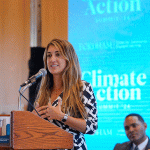
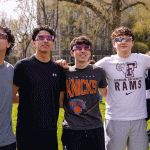

Daylong Event Calls for Grassroots Action and Celebrates Fordham’s Role as EPA Grantmaker
We don’t all have to be scientists to fight climate change, a prominent marine biologist and activist told Fordham students, activists, and members of the Bronx community at Fordham’s Rose Hill campus on April 8.
“I think what the world needs, right now more than ever, are people who can move between different disciplines,” said Ayana Elizabeth Johnson, Ph.D.
“We need people to solve climate problems in business, in engineering, in law, in medicine … all of these things relate to the world and how it’s changing. Everyone needs to know at some fundamental level what’s happening.”
Johnson, a marine biologist and co-founder of the group Urban Ocean Lab, was the keynote speaker of Fordham’s second annual Climate Action Summit. Her speech, on a day when millions of Americans paused to take in a rare solar eclipse, was a reflection of her personal journey and activism taken from her forthcoming book, What If We Get It Right? (Penguin Random House). She also sat for a Q&A session with H. Shellae Versey, Ph.D., an associate professor of psychology at Fordham.
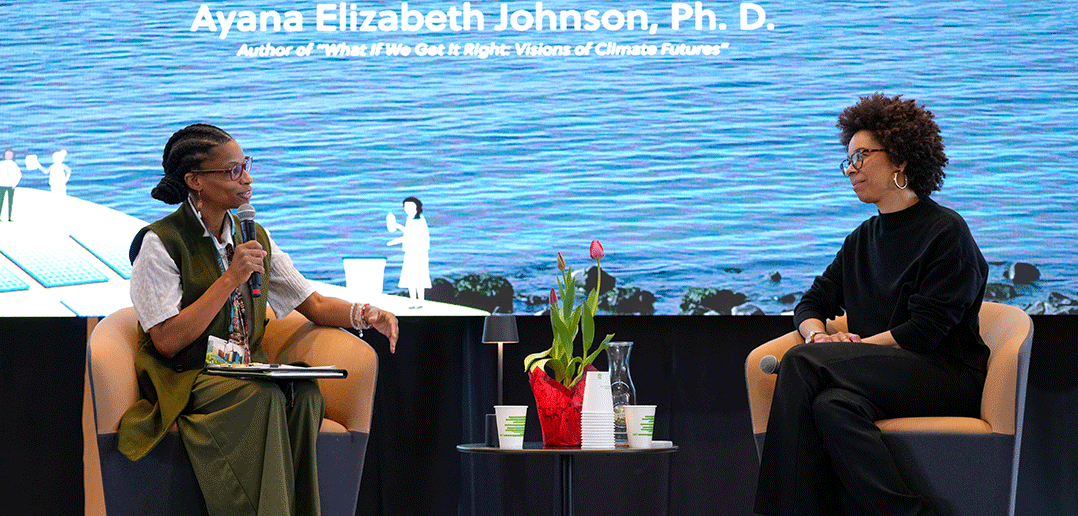
The work she’s done on behalf of communities from New York City to the Caribbean, she said, was always bolstered by a belief that anyone can be a part of the fight–including those who, like her father, were held back by racism, or those like her, “brimming with juxtapositions.”
“I’m a scientist who always intended to have a career in policy. I’m the daughter of a practical school teacher and a wistful artist. I’m cold New York winters and Caribbean heat,” she said.
“I’m working class and Harvard. I’m Black and white. I’m urban and smitten with the wilderness. I’m proof of the American dream—and proof that it is all too rare.”
The notion of taking a leadership role in fighting climate change was also the focus of other activities during the summit, which was organized by Fordham’s Center for Community Engaged Learning. An expo featured community groups, fireside chats, and panel discussions that examined federal funding for community-led solutions, as well as the future of environmental justice in higher education.
Elected Officials Celebrate Fordham’s Role as EPA Grantmaker
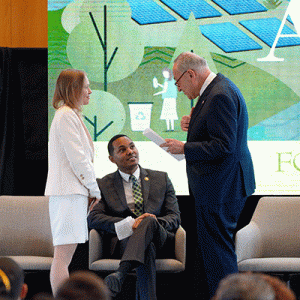
A morning press conference featured Senate Majority Leader Chuck Schumer and Congressman Ritchie Torres, who praised Fordham for taking on the responsibility of distributing $40 million EPA funds through a grant it was awarded in December. The grant, which will be administered by the Center for Community Engaged Learning, was the direct result of the Inflation Reduction Act (IRA), which was passed in 2022.
No Better Place
“We couldn’t have thought of a better place than Fordham to dispense this [funding]to go to grassroots groups,” said Schumer, who was instrumental in passing the IRA.
Torres added the program is benefiting the Bronx not by accident, but by design. “We designed the Inflation Reduction Act to lift up the lowest-income communities of color, especially the Bronx, which has been Ground Zero for environmental injustice,” he said.
The Bronx Is Not Burning; the Bronx Is Greening
“For a Bronx-based institution to receive $50 million in federal funding to distribute throughout the region is nothing short of staggering and unprecedented. And so, with the partnership of Fordham University, we are writing a new chapter in the story of the Bronx. The Bronx is not burning; the Bronx is greening.”
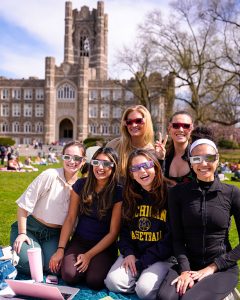
Also attending the celebration was U.S. Rep. Adriano Espaillat. Others who could not attend sent staff members, including Gov. Kathy Hochul, Sen. Kirsten Gillibrand, U.S. Rep. Paul Tonko, Bronx Borough President Vanessa Gibson, City Council Member Oswald Feliz, Westchester County Executive George Latimer, and Ulster County Executive Jen Metzger. See more elected official comments here.
Tania Tetlow, president of Fordham, said the grant, which will see the Center for Community Engaged Learning working with partner organizations from New York to Puerto Rico, epitomizes the mission of Fordham.
“This is so very us, this idea of connecting science with justice, of thinking about how we wake people up to the dangers ahead, and the chances to work together and inspire action and bring hope to an issue that can make us all despair and want to look away,” she said.
Julie Gafney, Ph.D., assistant vice president for strategic mission and executive director of the Center for Community Engaged Learning, thanked those responsible for the funding, community partners, and all those that will be involved in the project.
“Many of you are going to be partners in this work as we move ahead and really reorient Fordham around an initiative of public impact and social responsibility and see how traditional teaching, learning, and research can be leveraged in real-time toward community solutions.”
]]>Directed by serial entrepreneur and executive director Al Bartosic, GABELLI ’84, the Foundry also oversees the Fordham Angel Fund, which offers investments of up to $25,000 to the University’s active student and alumni founders.
Fordham Magazine caught up with a handful of alumni who received funding, coaching, or other support from the Foundry to find out where they—and their businesses—are now, and how they got there.
Mary Goode, FCRH ’20
Founder and CEO, Nantucket Magic
Fordham Degree: B.A. in Economics
The launch: I grew up on Nantucket Island and watched the tourist landscape change dramatically over the years, becoming increasingly popular yet harder to navigate. The company uses local expertise to offer hotel-like concierge service and amenities to vacationers in Nantucket, Massachusetts, and Palm Beach, Florida, including pre-arrival fridge stocking, dinner reservations, private chefs, backyard movie nights, beach picnics, wellness experiences, and more.
The challenge: Our biggest challenge has been navigating how to scale the business while maintaining exceptional service. To surmount this, we have recruited hospitality experts to work seasonally in both locations.
The assist: The Foundry has played a huge role in the success of my business! I learned so much during the process of the pitch competition alone. The actual funds I won helped us pay for marketing campaigns as well as expand our team, among other things.
The goal: I have been trying to broaden the definition of what success means to me. No matter what happens in the future, what I have created so far feels like an immense personal success, chiefly because of the incredible people I have worked with over the past three years.

Marquice Pullen, GSE ’21
Co-Founder, DAB Pickleball
Fordham Degree: M.S.E., Curriculum and Teaching
The concept: DAB Pickleball is a one-stop shop for pickleball players worldwide. Comprehensive infrastructure, certified coaching tips, quality equipment, competitive prices. Events, tournaments, and a thriving community. Your ultimate pickleball resource. I can’t take credit for the idea. My business partner and brother, Antonio, stumbled upon the sport at Acworth Community Center in Georgia.
The process: We participated in three pitch challenges: Fordham Foundry Rams Den, Fordham vs. Bronx, and Black Ambition, all within one year, and were successful in all three, thanks be to God. Social media marketing, risk management, inventory management, tax filing, bookkeeping, and opening our first facility in July 2023 were all challenging aspects of the process. However, we found our momentum in late December 2023.
The foundation: Initially unfamiliar with Fordham University, my enrollment through the Army Civilian Schooling (ACS) program, driven by my aspiration to become an instructor at the United States Military Academy, inadvertently initiated our entrepreneurial journey. Rooted in Jesuit principles, my education at Fordham eventually led me to the Fordham Foundry. Without Fordham University as a catalyst, I might not have discovered the Foundry or ventured into entrepreneurship.
The win: Success is evident through our community of players and dedicated volunteers and supporters. Seeing the smiles on our consumers’ faces as they enjoy the game of pickleball and, more importantly, witnessing the competitive spirit of our elderly pickleball players, is a success story in itself.

Rachel Ceruti, GSAS ’20
Founder and CEO, Reclypt
Fordham Degree: M.A. in International Political Economy and Development
The vision: I kind of fell into the sustainable fashion scene in New York City and upcycling—when you or designers take something that was going to be thrown away and repurpose it, diverting textiles from landfills. I started a blog that transitioned into a marketplace for fashion, but our community told us they wanted to do the upcycling, not just buy it. We listened, and our mission is to use our platform to explore circular economy structures, with Reclypt as a hub that explores how we create change.
The challenges: Funding really comes to mind. You can’t rely on unfair wages and volunteers. Another challenge, too, is letting people know why circular fashion is needed and what it is.
The assist: I would go into the Foundry space and pop ideas off of the other entrepreneurs and the Foundry team. I benefited from the free office hours with a lawyer. The business aspects that are behind the scenes, I would have never been able to navigate without the Foundry.
The next step: We want to host consistent events; be able to grow and hire, including start monetizing my team’s time; gain more visibility; and establish a steady revenue stream.
Usman “Ozzy” Raza, PCS ’14, GABELLI ’21
Founder and CEO, Equepay
Fordham Degrees: B.A. in Economics, Executive M.B.A.
The concept: Equepay is at the forefront of simplifying billing and payment processing, not just in health care but extending our innovative solutions beyond. We aim to convert the complex financial operations in hospitals and clinics into streamlined, user-friendly processes, ensuring easy and efficient financial management for all involved.
The launch: Equepay was born out of discussions with friends in the health care sector who highlighted ongoing challenges with payment processing and collections. Recognizing the untapped potential in this underserved market, I founded Equepay. Since launch, Equepay has been expanding its solutions across various hospitals in the U.S.
The foundation: My EMBA from Fordham has been crucial in shaping my entrepreneurial journey. The knowledge and skills acquired laid a solid foundation for Equepay’s strategies and operational methodologies.
The goal: Success is an evolving target. Our immediate goal is to integrate our platform into 196 hospitals by the end of the year, continuously enhancing our services to meet the growing needs of the healthcare sector.
Emmit Flynn, FCRH ’21
Co-Founder, Awful Cloth
Fordham Degree: B.A. in English
The brand: We started Awful Cloth to be an online apparel company for street and lounge wear, with a lot of colorful designs and bright, vibrant ideas. All of them were hand-drawn original designs and I was the designer.
The launch: For eight or 10 months, it was all planning. We got all the domains, Twitter, and Instagram very early on before we had anything produced. That made all the difference when we finally did start to get traction. Then it was a lot of workshopping and pushing it out to our friends and family to see what the response was.
The hurdles: The true hurdles were things that are intangibles. It wasn’t “where do we find this factory” or “how do we do this.” Those things were small hurdles, but we were so driven that there was nothing like that that would stop us. It was more about the mental hurdles: having patience and confidence and being sure of ourselves. Especially early on when things were slow, and we weren’t making any sales, and we weren’t making any profit.
The win: We recently sold the business to a medium-sized retail group called Lilac Blond. We were very happy to do it because selling was a goal of ours and we knew these people—and we were sure that they wanted the best for the brand.
]]>But was that air pollution actually causing those symptoms?
In a new study published this month, Marc Conte, Ph.D., professor of economics at Fordham, says no.
“There’s no question that air pollution is a public health threat, but measuring the impacts of air pollution on humans, whether it’s cognitive ability, physical health, or mental health, is pretty challenging,” said Conte.
Correlation vs. Cause
The challenge, he said, is overcoming the temptation to put more weight behind observational studies than they deserve. A researcher might collect data and determine that a large number of people with dementia have bad teeth. But that doesn’t necessarily mean that bad teeth cause dementia.
“The public health researchers who are conducting this work know that they’re studying correlations, but when the media reports on these studies, the layperson who consumes that information might not necessarily know that it’s a correlation and not causal,” he said.
For the study, “Observational studies generate misleading results about the health effects of air pollution: Evidence from chronic air pollution and COVID-19 outcomes,” which was published in the journal PLOS ONE, Conte and his research partners paired data from two different sources that were collected between March and September 2020.
The first source was health data gathered from U.S. Census tracts in New York City, whose geographic centers are less than 500 meters from a highway. That narrowed the number of tracts studied down to about 800 out of a total of 2,168 in New York City. The researchers then compared that to data collected from the New York City Community Air Survey, a network of 100 air quality monitors maintained around the five boroughs.
That extensive network, which augments a much smaller number of monitors in New York City maintained by the federal government, allowed researchers to compare communities that are downwind from highways with those that are upwind. If poor air quality were responsible for more severe COVID symptoms, communities downwind would be expected to fare worse than their upwind neighbors.
Findings
Conte said that across the 800 census tracts, there was no statistically significant difference between those who were downwind and thus had poorer air quality and those who were upwind and therefore had better air quality. Other factors, such as income differences, access to health care, and the ability to work remotely during the pandemic, are more likely culprits for severe symptoms, he said.
In addition, many residents in these areas were unable to leave New York City at the height of the pandemic, either because they lacked the means to do so, or their jobs required that they work in person. The inability to engage in this kind of “defensive behavior,” resulted in higher exposure to those infected with the virus.
“That fact suggests this issue of environmental justice extends beyond the fact that certain communities are located near more pollution sources,” he said.
“It’s actually a more systemic problem that lower-income people are employed in positions that could not accommodate remote work, with many designated ‘frontline’ workers,” he said, or simply didn’t have the resources to leave the city.
None of this means that researchers should cease conducting observational studies, especially during health emergencies like the pandemic, Conte said. Rather, he hopes the study will further elevate the notion that “correlation does not equal causation” in the public consciousness.
More Data = Better Outcomes
A second takeaway from the study is the importance of maintaining a large network of air quality monitors, which together are able to generate finely detailed data. In fact, Conte’s team also conducted a second experiment on the same topic using only data collected by the seven monitors maintained around New York City by the Environmental Protection Agency, without any input from the New York City Community Air Survey.
The results were much closer to the observational studies that had been done and might have led readers to believe that air pollution and severe COVID symptoms are explicitly linked to each other.
“As we think about things like wildfires and other sources of air pollution, these problems are becoming more and more intense,” said Conte.
“For us to be able to take measures that can reduce the public health outcomes and the threats to public health, we need to have more information. We need to invest more.”
]]>Horbatiuk, an attorney who majored in history at Fordham College at Lincoln Center before earning a J.D. at Fordham Law School, has been enthralled by the storied bivalve since reading Mark Kurlansky’s 2006 book The Big Oyster: History on the Half Shell. In public talks, he recounts oysters’ emergence as New York City’s leading export in the 19th century, when “New York had street cart vendors selling oysters for a penny a shell.” He also describes the demise of the city’s oyster beds due to overharvesting and pollution.
The Environmental Benefits of Oyster Restoration
In recent years, New Yorkers like Horbatiuk have been reintroducing oysters, not to be eaten but for the environmental benefits—the mollusk’s circulatory system filters contaminants from the city’s waterways, and the reefs help create habitats for other marine life. On Saturday mornings from May through September, he travels to City Island to measure the oysters’ growth, determine how many of them are growing on each craggy shell pulled from Long Island Sound, and pal around with a diverse group of volunteers devoted to the research project.
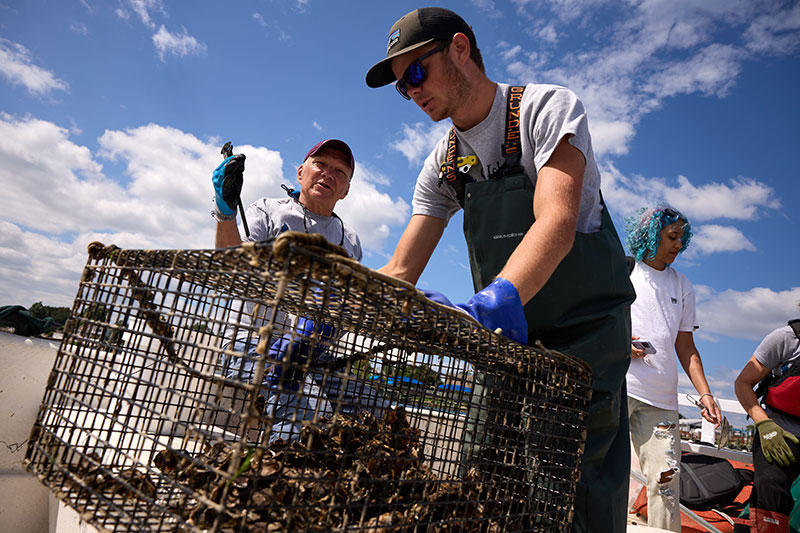
Measuring and counting the oysters is painstaking work that demands focus and dedication. Horbatiuk clearly has both, as he works methodically through an orange plastic pail filled with oysters affectionally labeled “Kevin’s Bucket.” His volunteer efforts that sunny Saturday morning in August were part of City Island Oyster Reef’s research study on oyster propagation and biodiversity in Long Island Sound. Among the species found living with the oysters that morning were grass shrimp, bristle worms, skillet fish, slipper snails, and boring sponges.
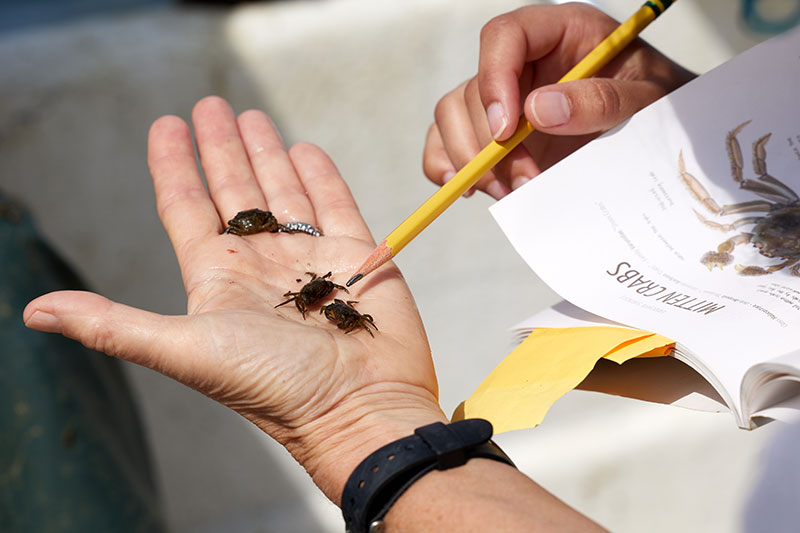
Horbatiuk recalls that in the 1830s, as many as 39 million bushels of oysters were harvested annually, with New York the center of the world’s oyster trade. Since industrialization, however, the oyster beds died. And today’s oysters, while helping to improve water quality by filtering up to 50 gallons of sea water a day, are inedible because the toxins that get filtered out remain in the oyster flesh.
“The history grabbed me first,” said Horbatiuk, who grew up on New York’s Lower East Side and now lives in the Riverdale section of the Bronx. “Very few people realize how important they are historically and what they do for the water’s health.”

‘Oysters for a Penny a Shell’
Horbatiuk’s love of the city’s past dates back to his undergraduate days at the Lincoln Center campus. His favorite courses focused on social and intellectual history, which helped illuminate developments in pop culture in American society.
His Saturday morning efforts on City Island dovetail with his role as a volunteer as an ambassador for the Billion Oyster Project, which does public outreach on oyster restoration and monitors oyster propagation in New York waterways. That outreach includes talks he gives throughout the metropolitan area to New Yorkers interested in learning more about the history of oysters. At his talks, he’ll mention that the Fanny Farmer cookbook from the 1860s had 40 recipes for oyster dishes. He’ll also hearken back to the early 1600s, when the Lenape people, who had lived in the region for centuries, traded oysters with the Dutch and piled them high in middens along the coast.
“It’s an easy sell to the public,” he says. “It just captures their imagination when you tell them you could find oysters in Spuyten Duyvil in the Bronx, and instead of hot dog carts on the street, New York had street cart vendors selling oysters for a penny a shell.”
In June, he manned a table at the New York Philharmonic performance at Lincoln Center that featured three classical pieces inspired by water—one depicted foreboding ocean moods and a vicious storm, while another portrayed the role of water in an Australian myth. During intermission, he chatted with concertgoers about the oyster project.
In mid-July, he participated in the City of Water Day by visiting the Sebago Canoe Club in Jamaica Bay in Brooklyn to talk about conservation and oyster restoration. That same month he spoke at the Beczak Environmental Education Center in Yonkers about the history of oysters in the Hudson River estuary. That’s where he’s a member of the Yonkers Paddling and Rowing Club and served as club commodore from 2019 to 2021.
“Kevin may be a lawyer, but he’s found another passion: the history of oysters,” said Bob Walters, executive director of the Beczak Center. “He tells that story with such enthusiasm and passion. And he’ll share what he’s learned at the drop of a hat.”
]]>